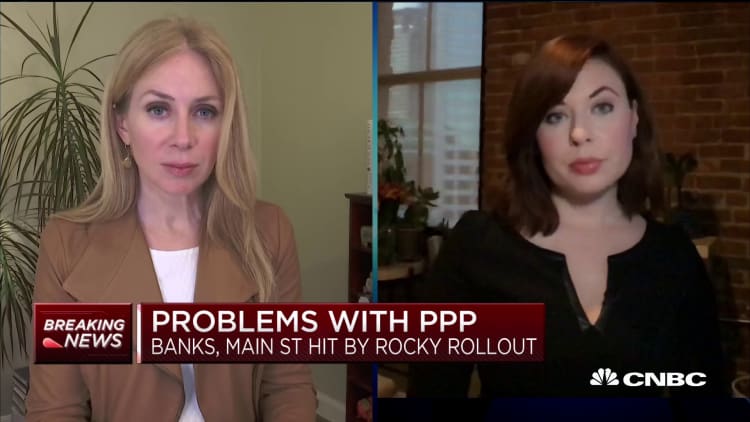Thinking they won’t qualify for aid, small businesses could miss out on millions in stimulus
- Some small business owners worry they won’t qualify for the government’s stimulus because they have already laid off staff.
- This common misconception about the Paycheck Protection Program could cost them millions in relief aid.
“When we got the order we were non-essential, that was the day we cleared house,” said Suzanna Cameron, 30, the owner of Stems, a flower shop in Brooklyn, New York.
After her store was forced to close in response to the coronavirus pandemic, the single mom said she tried to pivot with virtual flower arranging workshops and free contactless delivery, but the business quickly came to a standstill.
“The next day I let most of my staff go.”
Cameron said she knew the business could not weather two months without work. For florists, spring is the peak season. “From a cash flow basis, that’s detrimental,” Cameron said.

“I am leaning into the fact that I have some savings in the business and basically it’s going to be a bleed out and I hope we make it to the other side,” she said.
There is hope: As a sole proprietor, Cameron is eligible for the government’s Paycheck Protection Program to help survive the economic fallout from Covid-19.
How the loan program works
As a part of the forgivable loan program in the coronavirus rescue package, a business can use the government’s money to pay its employees for up to eight weeks and then the loan will be forgiven.
More from Personal Finance:
Your forgivable loan may be undercut by this provision
Small businesses worry the loan money will run out
What you need to do if you lose your job
There are certain conditions, however. Businesses must keep their workers and wages intact through June 30 —compensation paid to any employee cannot by reduced by more than 25%.
Further, at least 75% of the money from the government must be used solely for wages and benefits and only those funds used for payroll, rent, utilities and mortgage interest over an eight-week period will be forgiven.
If a business does not meet these terms it will have to pay back a portion of the money over a two-year period at 1% interest, with an option to delay the first payment for six months.
‘I’m not eligible’
Since Cameron already laid off her staff, she worries that she would no longer qualify for loan forgiveness. That’s where misconceptions persist.
It is true that to be approved for the program, both the headcount and the compensation levels would need to be restored to where they stood before the Covid-19 crisis.
But Cameron could still rehire her workers and use the money from the government to pay them for up to eight weeks — whether they are working now or not, explained Richard Winchester, a tax law professor at Seton Hall University School of Law.

Part of the confusion stems from the guidance released by the Small Business Administration, Winchester said. “We are trying to build a plane while we are in flight.”
The goal, however, is clear, he added. “All the government wants is for businesses to start paying their workers again,” Winchester said.
If they “rehire the workers and use the money to fund their paychecks,” then, “the loan transforms into a grant.”
